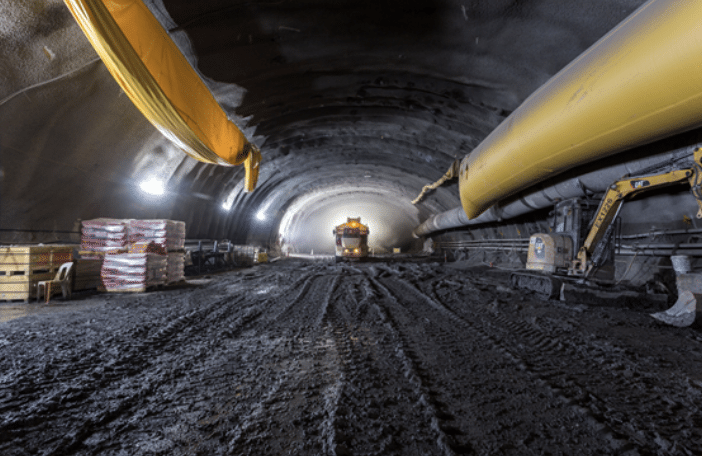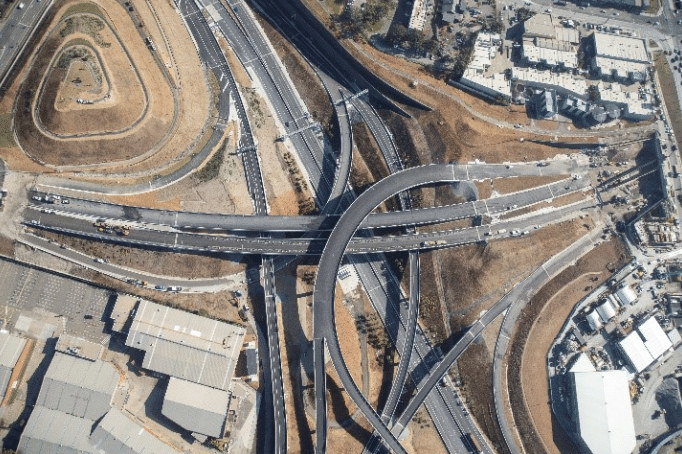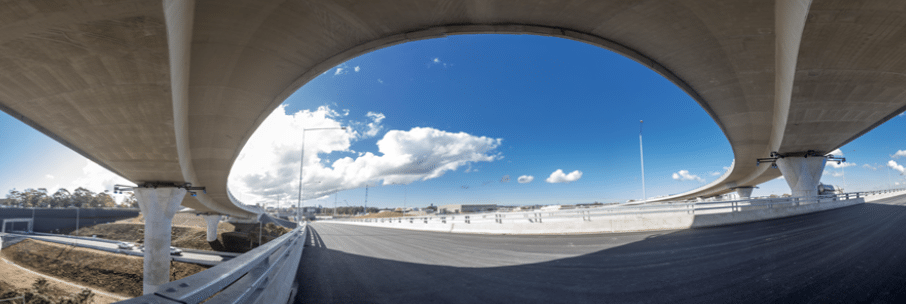The WestConnex New M5 project is the Stage 2 component of the WestConnex scheme. The Project runs from the existing M5 East corridor at Beverly Hills via tunnel to St Peters, providing improved access to the airport, south Sydney and Port Botany precincts.
The Project will deliver approximately nine kilometres of two-lane twin tunnels with capacity to operate three lanes in the future, motorway to motorway connections to the King Georges Road Interchange Upgrade at Beverly Hills, and a new interchange at St Peters.
From early works, sustainability was incorporated into the design and delivery of the New M5 Project to ensure that the project objectives and targets were achieved, and that a positive social and environmental legacy was provided for the Client (Sydney Motorway Corporation), impacted local stakeholders, and ultimate road users. Given the energy intensive nature of tunnelling in both construction and operation, CDS-JV prioritised the reduction of lifecycle carbon emissions through value engineering and smarter construction. As a result, lifecycle carbon emissions were reduced by~34% due to:
- LED tunnel lighting in lieu of fluorescent lighting
- Ventilation fan optimisation and unit reduction
- Wall mounted cable trays
- Tunnel alignment optimisation
- Onsite crushing and screening operations
- Onsite containment of contaminated materials
- Transurban’s Power Purchase Agreement to provide ~60% renewable power for operations from 2021
Ratings Highlights:
Significant green space and habitat enhancement
- Successful Green and Golden Bell Frog habitat management
- Design and construction of new habitat ponds on Eve Street
- Management of existing RTA frog ponds
- Incredibly successful captive breeding colony establishment
- ~20% green space and habitat enhancement (~500% including ecosystem and species offsets and the new Eve St frog ponds)
- Purchase of 261 ecosystem and species credits offsets (totalling 1,410,282.06m2 of land to be ecologically managed in perpetuity) for the following threatened ecological communities and fauna:
- Cook River Castlereagh Ironbark
- Swamp Sclerophyll Forest Forest
- Green and Golden Bell Frog (Litoria aurea)
- Purchase of 261 ecosystem and species credits offsets (totalling 1,410,282.06m2 of land to be ecologically managed in perpetuity) for the following threatened ecological communities and fauna:
Strong social outcomes
- Aboriginal business spend of ~$27M (target of $9M)
- Strong focus on local business engagement:
- Contracts executed with Australian companies (96.3%)
- Contracts executed within NSW (79%)
- Contracts executed within Greater Western Sydney (36.1%)
- Contracts executed within Local Government Areas (22.3%)
- 244 trainees and apprentices engaged during construction, including 22 people in Pre-Employment Programs
Beneficial onsite spoil reuse
In addition to the reuse of ~650,000 tonnes of tunnel sandstone for civil works in lieu of importing virgin materials, CDS-JV contained significant volumes of contaminated materials in road widening works and noise mounds at Kingsgrove and the foundations of the St Peters Interchange. This resulted in significant triple bottom line benefits, including:
- Reduced truck movements for hauling spoil and materials leading to reduced emissions from fuel, reduced traffic and increased safety to the community
- Reduced waste generation and reliance on landfill
- Reduced noise and vibration impact to the community from reduced construction
Verified Innovations
- World first: use of Dry-Flo® testing for fire deluge system testing. The use of low flow air in lieu of high-pressure water to test the deluge system improved tunnel program (as exclusion zones were reduced and the system could be tested progressively), and saved over 11,000kL of potable water.
- Australian first (with M4E): mounting cable trays to the wall of the tunnel, rather than trenching the cables into the ground, produced significant benefits in terms of reducing construction excavation and back-fill requirements and improving operational maintenance access.
- Australian first (with M4E): LED lighting, rather than continuous fluorescent lighting, was installed throughout the tunnel interior. This significantly decreased operational energy and maintenance requirements.
- Market innovation: Participation in an EPA endorsed landscaping trial using compost from organic waste to divert waste from landfill (Kingsgrove). The outcomes of this trial, with support from Edge Environment, will be published and used in promotional material.



